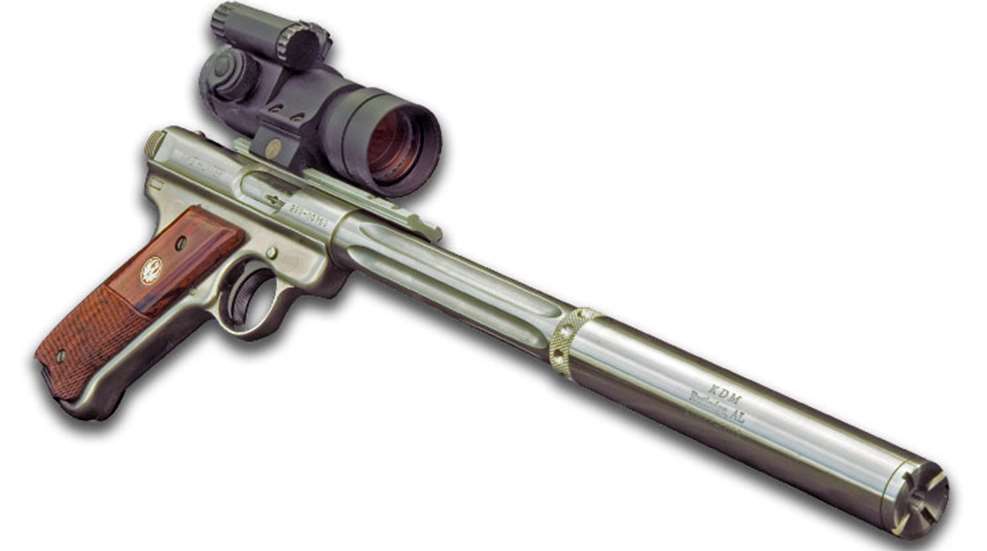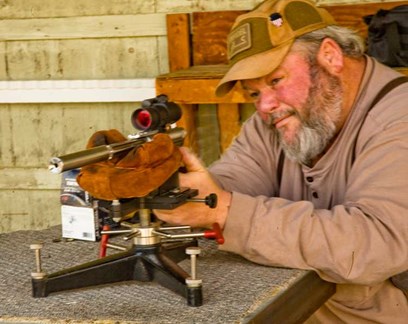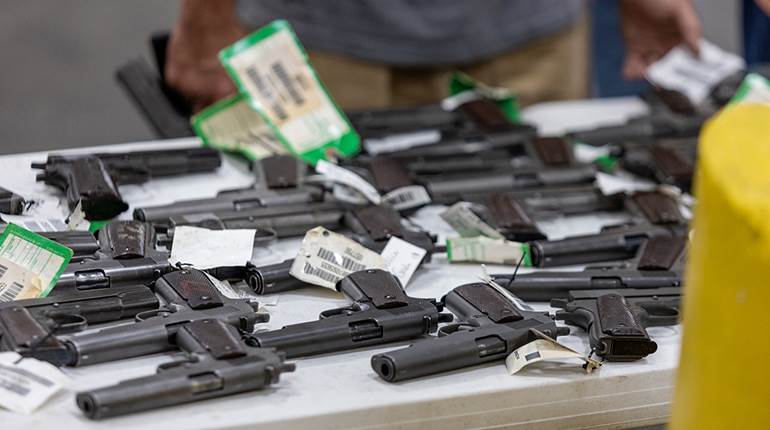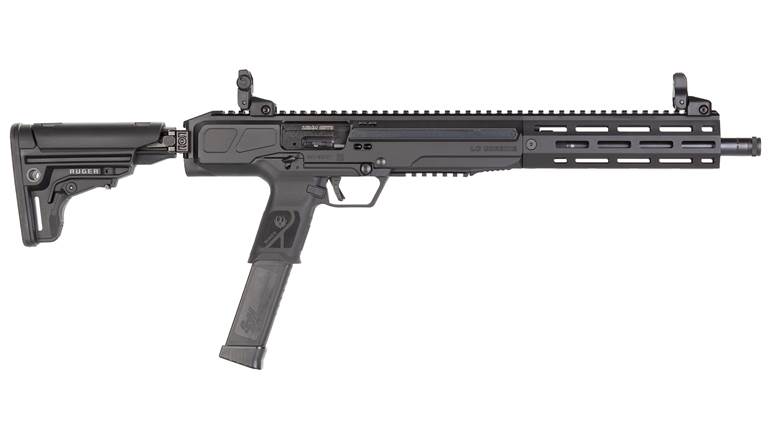
Those who recognize this byline know that I am very much a traditionalist when it comes to guns—and a lot of other things as well. I prefer walnut stocks, bolt-action rifles—well, lever actions, too—N-frame Smith & Wesson revolvers, single-action revolvers and the 1911. While I recognize certain engineering and manufacturing improvements spearheaded by the gun industry, you would almost have to waterboard me before I’d admit that I own an AR-15. Actually, I have three but that’s a moot point right now. So when I showed up at a prairie dog shoot with my Ruger Mark III Hunter pistol topped with an Aimpoint and a KDM suppressor, my longtime buddies asked me if I was feeling well or on some new meds. To understand this anomaly it’s best to start at the beginning.
Starting along about 2002 a small remuda of ne’er-do-wells calling themselves outdoor or gunwriters would gather annually at the Tejon Ranch outside of Los Angeles for a few days of pig hunting a nd ground squirrel shooting. The details of these confabs should probably remain as tough to unearth as Obama’s college records, but if I recall correctly, in 2004 Dick Williams—who was my handgun editor when I was Editor in Chief of Shooting Illustrated—brought a then-new Ruger Mark III Hunter pistol to the Tejon. Atop it he had mounted an Aimpoint Comp C3 red-dot sight.
nd ground squirrel shooting. The details of these confabs should probably remain as tough to unearth as Obama’s college records, but if I recall correctly, in 2004 Dick Williams—who was my handgun editor when I was Editor in Chief of Shooting Illustrated—brought a then-new Ruger Mark III Hunter pistol to the Tejon. Atop it he had mounted an Aimpoint Comp C3 red-dot sight.
After a little cajoling, I set aside my S&W K-22 and gave this modern upstart a whirl. My first four shots resulted in four kills of the little dirt rodents at ranges out to 60 or 70 yards. Hmm…I thought, I’m gonna have to get me one of these. I did, and just as Dick did, I mounted an Aimpoint Comp C3 sight on it, after removing the factory iron sights. It didn’t replace my K-22, but I found myself including it on more and more rodent shoots. The Mark III Hunter is already a very accurate .22 LR pistol with its 6 7/8" bull barrel; the Aimpoint helps these old eyes a great deal in extracting the most from that accuracy. Happily, this particular pistol has a very crisp trigger pull of 3 1/2 lbs. which also contributes to its ability to hit small targets way out there.
I am an unrepentant gun geek, so as a geek I am always thinking of ways to improve my guns. Prairie doggin’ is a summertime activity, and I hate clamping ear pro to my noggin and sweating underneath it. Enter John Killebrew of Rutledge, Ala.
John and I met via Facebook and some mutual friends. He spent 27 years as an electrical engineer in the aerospace industry. It was during that time that he cultivated a mechanical and machining background while troubleshooting various projects. When his employer shut its doors in 2012 John decided to combine his two loves: guns and engineering. He began designing suppressors in his head, and in 2013 he secured a manufacturing license from BATFE. John’s specialty is making small improvements on basic designs to suit an individual customer—sort of a custom suppressor gunsmith—within reason.
Last fall I sent him the Ruger for barrel threading and placed an order for one of his cans, as suppressors are affectionately called. The threading job was superb; you really have to look hard to find the joint between the thread protector and the barrel. After the Feds got paid off and were satisfied I wasn’t a terrorist, I took possession of the can in December.
Everyone—including me—who has shot one of John’s cans says it is incredibly quiet. John wanted to shorten the barrel on my Hunter to ensure subsonic performance and the utmost in noise reduction, but I resisted because this is primarily a hunting gun and I want all the velocity I can get out of it. To be sure, there is still the supersonic crack of the bullet, but it is no more an irritant than the report of a pellet gun.
Some lessons learned: Rimfires are dirty calibers, and I mean really dirty. The carbon buildup on the baffles necessitates cleaning every 200 to 300 rounds. After I returned from a prairie dog safari in early June I took the can apart to clean it and needed a wooden dowel to beat the aluminum baffles out of it. In order to get the baffles clean, I resorted to soaking them in Kroil for a couple of hours followed by a couple of more hours cooking in my ultrasonic cleaner. John told me this is typical of rimfires. Center-fires operate at much higher temperatures and pressures and, consequently, are more-or-less self-cleaning.
Performance on the prairie dog safari was fully up to expectations, though my buddies and I did more target shooting than prairie doggin’ with the Ruger this time because of incessant 30 to 40 mph winds that plagued us for three of the four days we shot. Still, I did the dirty deed on a dozen or so of the little rodents. It’s a pleasure to be able to shoot sans ear pro.
Recently, another pal had his kids and grandkids visit and asked me to join them for a day of shooting. The first gun they all wanted to shoot was what they called my “Star Wars” gun. They probably put 200 rounds through it and fell in love with it. Brad, my buddy and their grandpa, has a similar Ruger in his collection and said he just may go the Aimpoint-and-suppressor route with it. Yeah, it ain’t a classic, but this Ruger is definitely a keeper gun.
John Killebrew is fine tuning his .30-cal. can to bring it to market. Like the rimfire can, everyone who has shot it is impressed with its quietness. I’m already on the list for one. The rimfire can is priced at $250 with aluminum baffles; $275 for stainless steel baffles. If you decide to go with one of his cans, be prepared to be put on a waiting list. Killebrew Design and Manufacturing is a one-man show, and every part, including the baffles is hand turned on a lathe by John. You can see more about these superb suppressors at kdmcans.com.





































